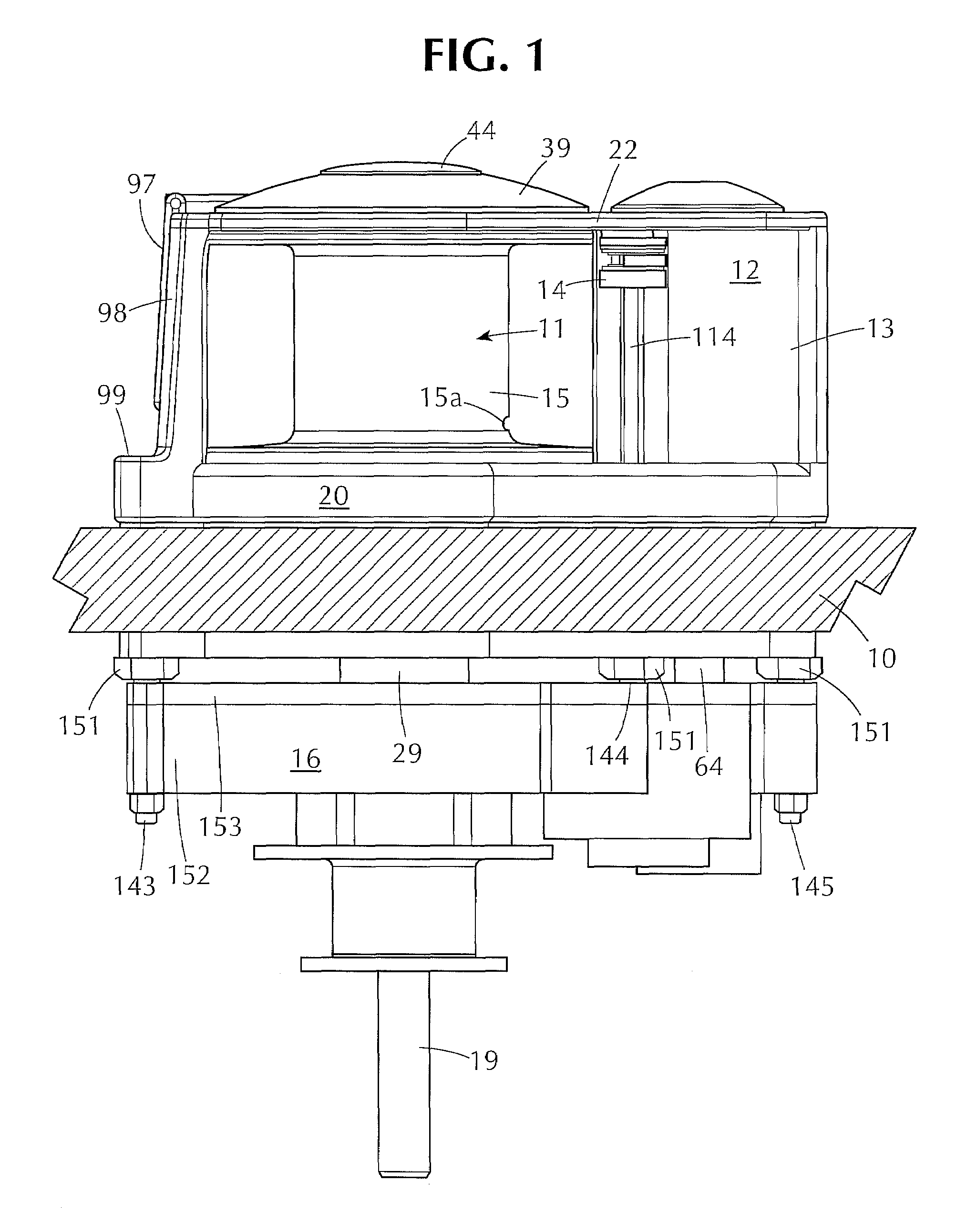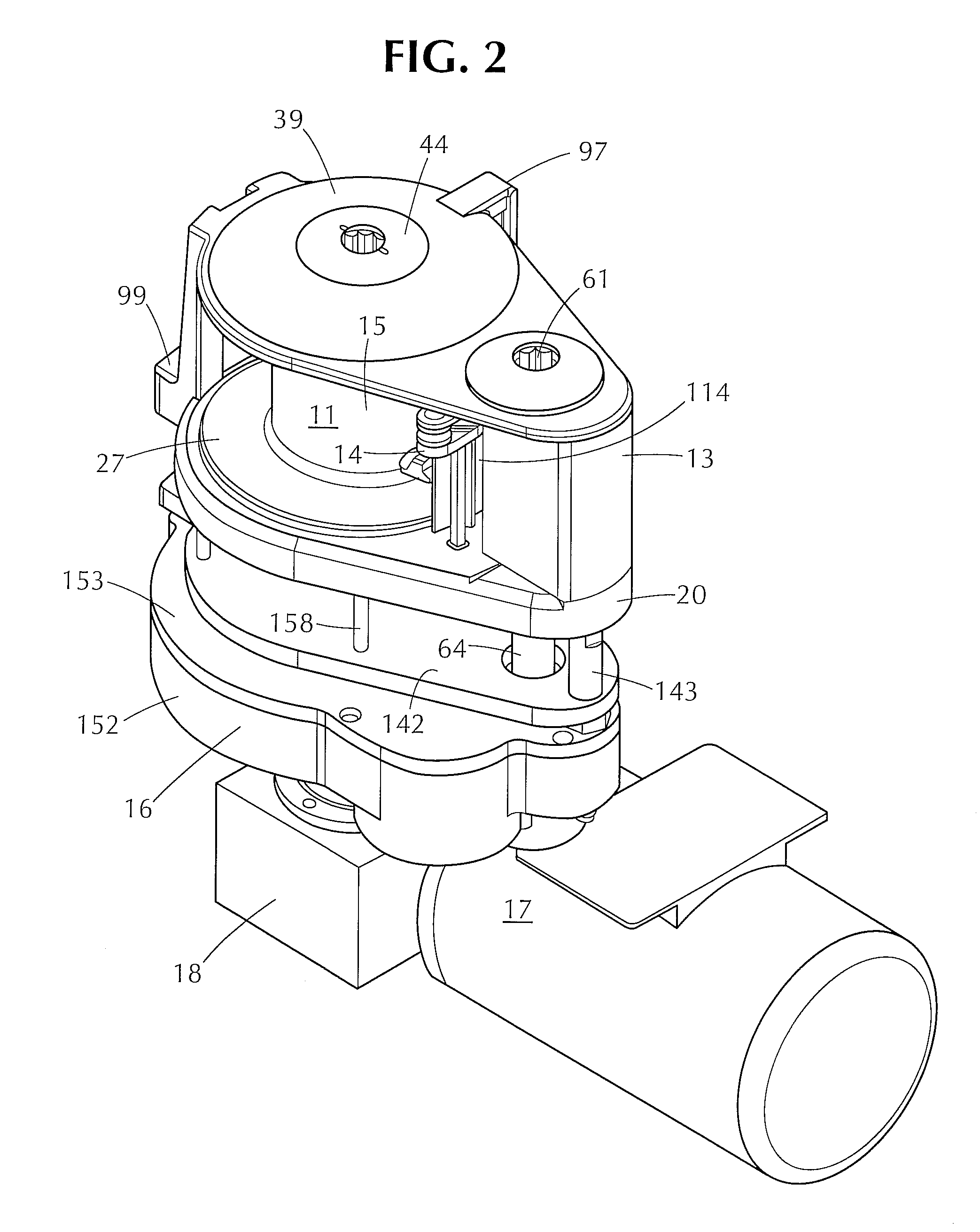Line handling winch for sailing yachts
a technology for sailing yachts and winches, which is applied in the field of sailing yacht line handling winches, can solve the problems of affecting the safety of sailing yachts, so as to prevent fouling of the line, prevent the release of tension on the line, and facilitate the operation of sailing yachts. the effect of safety
- Summary
- Abstract
- Description
- Claims
- Application Information
AI Technical Summary
Benefits of technology
Problems solved by technology
Method used
Image
Examples
Embodiment Construction
[0030]Referring now to the drawings, and initially to FIGS. 1-4 thereof, the reference numeral 10 indicates a deck structure of a sailing yacht on which is mounted the winch of the invention. The winch includes a flanged winding drum 11 supported for rotation on a winch base 20. Positioned forwardly of the flanged drum 11 is a level wind mechanism, generally designated by the numeral 12 which, in the illustrations of FIGS. 1 and 2, is largely concealed within a protective housing 13. A rigging line passes through a movable line guide 14 and is attached to the core 15 of the winding drum, by a suitable keyhole engagement or the like 15a. Alternatively, the drum may be formed with a post or hook, to engage a suitable eye fitting at the end of the line to enable the line to be easily engaged to or disengaged from the winding drum. As will be further described herein, as line is wound upon the winch drum by rotation thereof, the line guide 14 travels vertically up and down a predetermin...
PUM
 Login to View More
Login to View More Abstract
Description
Claims
Application Information
 Login to View More
Login to View More - R&D
- Intellectual Property
- Life Sciences
- Materials
- Tech Scout
- Unparalleled Data Quality
- Higher Quality Content
- 60% Fewer Hallucinations
Browse by: Latest US Patents, China's latest patents, Technical Efficacy Thesaurus, Application Domain, Technology Topic, Popular Technical Reports.
© 2025 PatSnap. All rights reserved.Legal|Privacy policy|Modern Slavery Act Transparency Statement|Sitemap|About US| Contact US: help@patsnap.com



